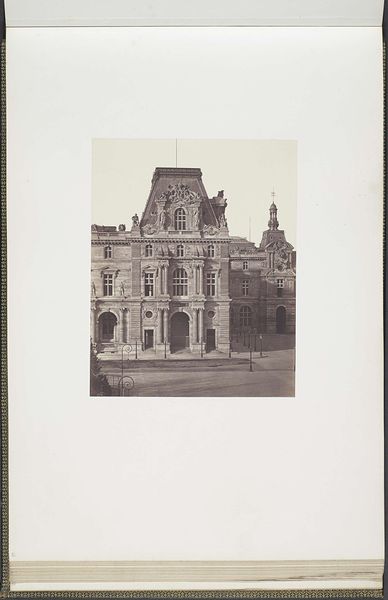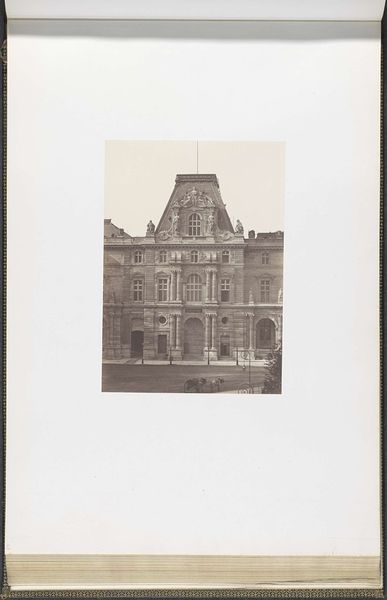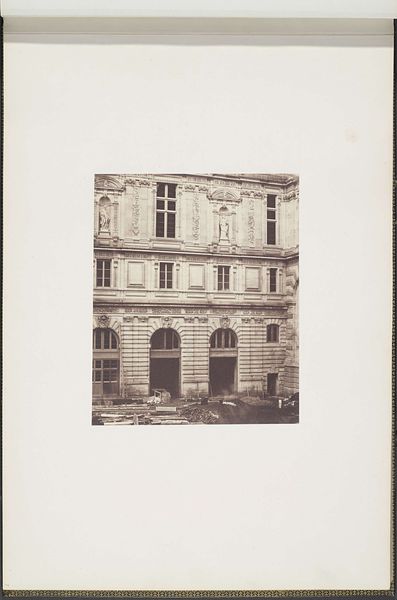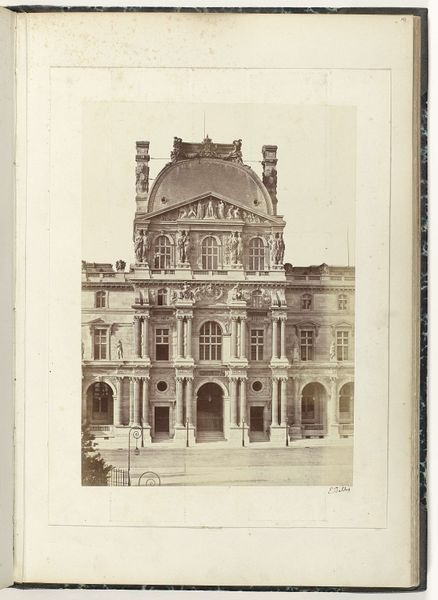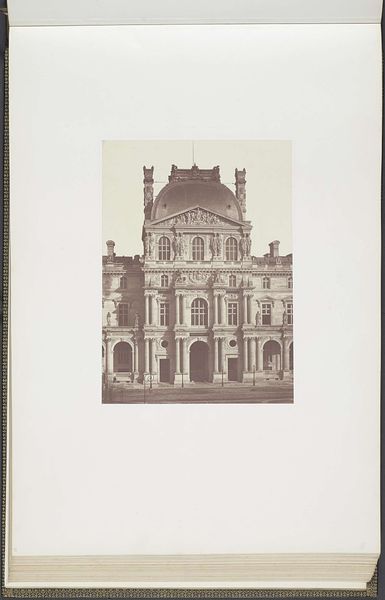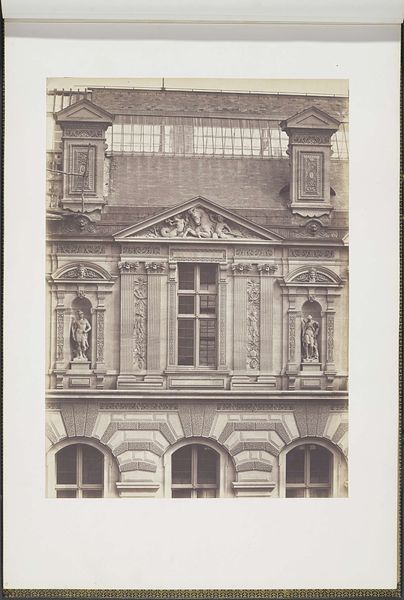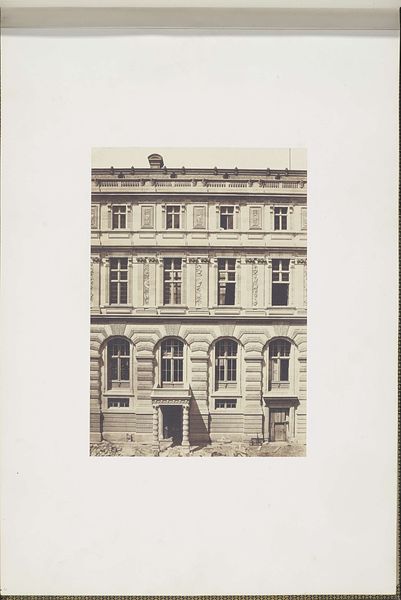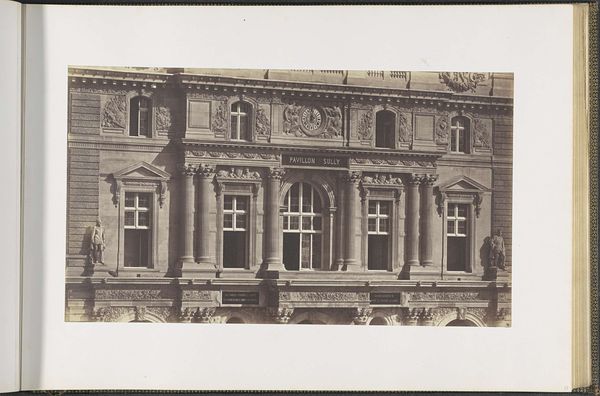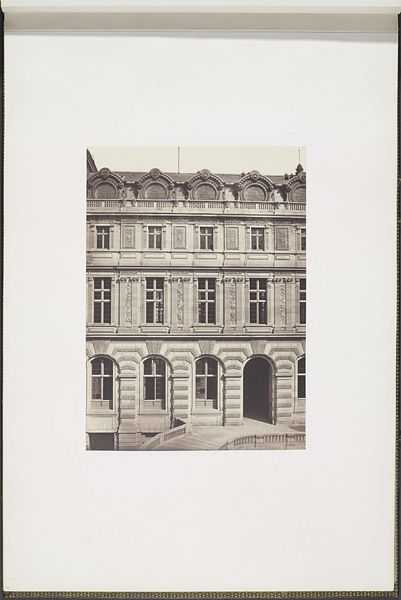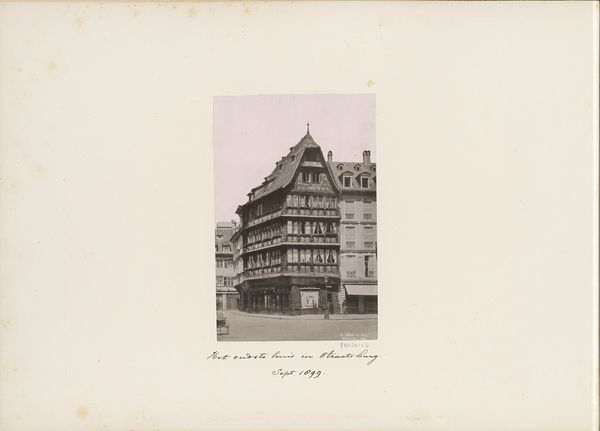
#
toned paper
#
sculpture
#
white palette
#
unrealistic statue
#
carved into stone
#
carved
#
tonal art
#
remaining negative space
#
watercolor
#
statue
#
building
Dimensions: height 382 mm, width 560 mm
Copyright: Rijks Museum: Open Domain
This photograph of the Pavillon Sully in the Palais du Louvre was captured by Edouard Baldus, likely in the mid-19th century. The sepia tones evoke a sense of classical antiquity, framing the architectural structure with a meticulous eye. The image is dominated by the symmetrical facade of the Pavillon, emphasizing its ordered, hierarchical design. Baldus presents the building as a study in contrasts; the solid stone against the delicate tracery of windows and the juxtaposition of light and shadow enhancing the sculptural depth of the building. The photograph is not merely a record; it is an interpretation. It invites us to consider the relationship between photography and architecture, where the camera becomes a tool to examine power and representation. Through the lens, Baldus captures not just a building, but also the codes and values embedded within it, prompting a discourse on space, structure, and cultural memory. The building embodies classical ideals of harmony and order.
Comments
No comments
Be the first to comment and join the conversation on the ultimate creative platform.
